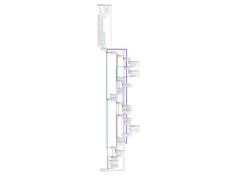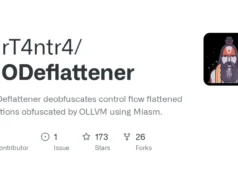Penelope is a shell handler designed to be easy to use and intended to replace netcat when exploiting RCE vulnerabilities. It is compatible with Linux and macOS and requires Python 3.6 or higher.
It is a standalone script that does not require any installation or external dependencies, and it is intended to remain this way.
Among the main features are:
- Auto-upgrade shells to PTY (realtime resize included)
- Logging interaction with the targets
- Download files/folders from targets
- Upload local/remote files/folders to targets
- Run scripts on targets and get output on a local file in real time.
- Spawn shells on multiple tabs and/or hosts
- Maintain X amount of active shells per host no matter what
- Multiple sessions
- Multiple listeners
- Serve files/folders via HTTP (-s switch)
- Can be imported by python3 exploits and get shell on the same terminal (see Extras)
Penelope can work in conjunction with metasploit exploits by disabling the default handler with set DisablePayloadHandler True
One useful feature regarding Windows shells is that they can be automatically upgraded to meterpreter shells by running the “meterpreter” module.
Usage
Sample Typical Usage
./penelope.py # Listening for reverse shells on 0.0.0.0:4444
./penelope.py -a # Listening for reverse shells on 0.0.0.0:4444 and show reverse shell payloads based on the current Listeners
./penelope.py 5555 # Listening for reverse shells on 0.0.0.0:5555
./penelope.py 5555 -i eth0 # Listening for reverse shells on eth0:5555
./penelope.py 1111 2222 3333 # Listening for reverse shells on 0.0.0.0:1111, 0.0.0.0:2222, 0.0.0.0:3333
./penelope.py -c target 3333 # Connect to a bind shell on target:3333Demonstrating Random Usage
As shown in the below video, within only a few seconds we have easily:
- A fully functional auto-resizable PTY shell while logging every interaction with the target
- Execute the lastest version of Linpeas on the target without touching the disk and get the output on a local file in realtime
- One more PTY shell in another tab
- Uploaded the latest versions of LinPEAS and linux-smart-enumeration
- Uploaded a local folder with custom scripts
- Uploaded an exploit-db exploit directly from URL
- Downloaded and opened locally a remote file
- Downloaded the remote /etc directory
- For every shell that may be killed for some reason, automatically a new one is spawned. This gives us a kind of persistence with the target
For more information click here.

















